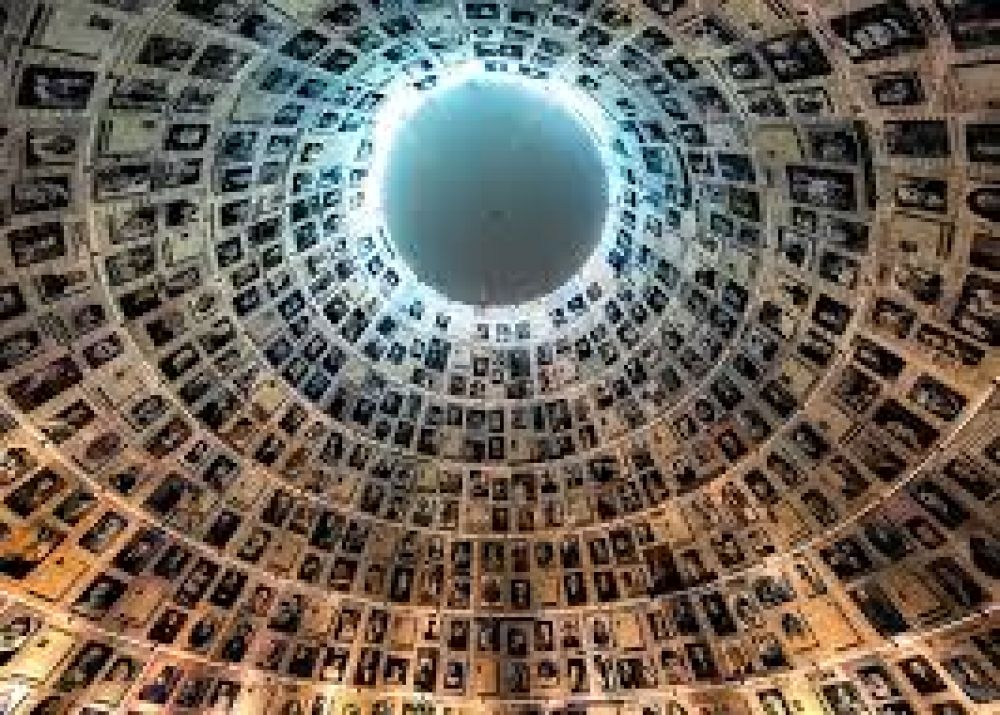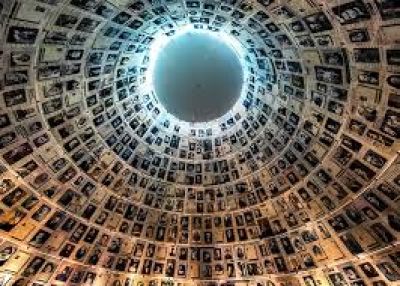

The guided tour of the Holocaust History Museum at Yad Vashem offers an in-depth view into the Jewish experience during the Holocaust. The museum's architecture, designed by Moshe Safdie, sets a somber and reflective ambience. Visitors are taken on a chronological journey, starting from the rise of anti-Semitism and the Nazi Party, through to the ghettos, the 'Final Solution', and post-war resettlements. Expert guides provide detailed narratives, individual stories, and context to the vast array of artifacts, photographs, testimonies, and multimedia displays. The tour is a deeply moving experience, highlighting the resilience and courage of the Jewish people during this dark period in history. It's a must-visit to ensure such atrocities are never forgotten.
This poignant memorial honors the memory of the 1.5 million Jewish children who perished during the Holocaust. Conceived by architect Moshe Safdie and sculptor Yigal Tomarkin, the Children's Memorial is housed in an underground cavern. As visitors progress through the darkness, they are encompassed by the soft glow of countless candles reflected infinitely by mirrors, accompanied by a solemn recitation of the names, ages, and countries of origin of the murdered children. This profoundly moving and intimate experience is a sobering reminder of the innocence lost, and serves as a testament to the tragedies of the Holocaust. The Children's Memorial is universally impactful, leaving a lasting effect on all who visit.
The Hall of Names at Yad Vashem is a memorial to the six million Jews who perished in the Holocaust. It's a space of remembrance and documentation, housing an extensive archive of Pages of Testimony - personal records of Holocaust victims. The Hall's architecture is deeply symbolic, with a circular repository around a reflective pool pointing downwards towards an abyss, and a dome above displaying photographs of Holocaust victims. The goal of the Hall of Names is not only to memorialize the dead but also to restore their identity and personal stories. Visitors are invited to browse through the records, and those who have lost family members in the Holocaust are encouraged to submit Pages of Testimony. It's a place for one to connect with the past and pledge to keep the memory of the victims alive.
The Valley of the Communities at Yad Vashem is an imposing outdoor monument, etched with the names of over 5,000 Jewish communities that existed before the Holocaust. Visitors walk through a series of looming corridors, cut from natural rock, and encounter the names of towns and villages - some of which were completely annihilated during the war. This monumental structure is a spatial representation of the vast Jewish life and culture that once thrived but was subsequently destroyed in the Holocaust. It serves as a physical reminder of what was lost, ensuring that the existence of these communities will not be forgotten. It's a powerful tribute to the depth and diversity of Jewish life before World War II.
Yad Vashem's Artifacts Collections is a display that includes thousands of items donated by Holocaust survivors and victims' families. These artifacts range from personal belongings such as diaries, toys, and clothing to artworks created in the ghettos and camps. Each artifact tells a unique story of life, struggle, and survival during the Holocaust. Visitors can also find objects that reflect the vibrant cultural and religious lives of European Jews prior to the war. The exhibit provides a tangible connection to the individuals who owned these items, illustrating the human stories behind the history. Seeing the personal effects of those who lived through these events adds immeasurable emotional weight to their stories and helps visitors connect deeply with the past.
Standing tall within the Yad Vashem complex, The Pillar of Heroism is a monument dedicated to Jewish resistance during the Holocaust. It symbolizes the courage and defiance of Jews who fought against their Nazi oppressors, including ghetto uprisings, partisan activities, and spiritual resistance. The monument itself, composed of basalt rock, rises from a base of Warsaw Ghetto cobblestones and is topped with a flame. The stark, somber structure set against Jerusalem's rolling landscape offers a place of contemplation and recognition for the heroism exhibited in the face of dire persecution. The Pillar of Heroism stands as a tribute to those who, despite facing insurmountable odds, chose to resist and fight for life and dignity.
The Gardens of the Righteous Among the Nations, found within the tranquil grounds of Yad Vashem, are dedicated to non-Jews who risked their lives to save Jews during the Holocaust. These individuals, known as the Righteous Among the Nations, are commemorated here with trees planted in their honor, each with a plaque bearing their names. Strolling through the gardens, visitors learn stories of bravery and compassion, where ordinary people exhibited extraordinary courage. The peaceful setting offers a space for reflection on the light of humanity that shone through the darkness of atrocity. It inspires current and future generations to commit to acts of kindness and bravery in the face of injustice.
For researchers and history enthusiasts, Yad Vasham’s archives and library offer a treasure trove of information related to the Holocaust. With an extensive collection of books, documents, photographs, and survivor testimonies, the facility provides a comprehensive resource for anyone looking to delve deeper into the historical context and personal accounts of this time. Scholars can investigate a wide range of topics from the rise of Nazi ideology to the individual experiences of Jews and other persecuted groups during World War II. It's an invaluable resource for anyone seeking to understand the magnitude and implications of the Holocaust, with information that continues to inform and educate about the dangers of hatred and intolerance.
Yad Vashem offers a variety of educational activities and workshops aimed at students, teachers, and the general public. These programs are designed to promote understanding of the Holocaust’s history and its universal implications. Through interactive teachings, group discussions, and creative workshops, participants gain a deeper comprehension of the complex issues related to the Holocaust, such as moral dilemmas, personal responsibility, and the importance of memory. The sessions may cover topics like the roles of propaganda, the choices faced by individuals during the Holocaust, or the power of personal testimony in preserving history. These educational experiences serve not only to remember the past but also to educate for the future, sowing the seeds for a world that rejects hate and values human life.
The synagogue at Yad Vashem is more than a place of worship; it's a sanctuary that memorializes Jewish religious life before and during the Holocaust. The interior houses Judaica and religious artifacts that were rescued from synagogues across Europe, each piece serving as a remnant and a reminder of devastated communities. Special services and memorial prayers are held here, especially on Holocaust Remembrance Day, making it a place of collective mourning and reflection for those who perished. Visitors from around the world are welcome to enter the synagogue to contemplate and pay homage to the spiritual resistance and undying faith of those who faced the horrors of the Holocaust.
